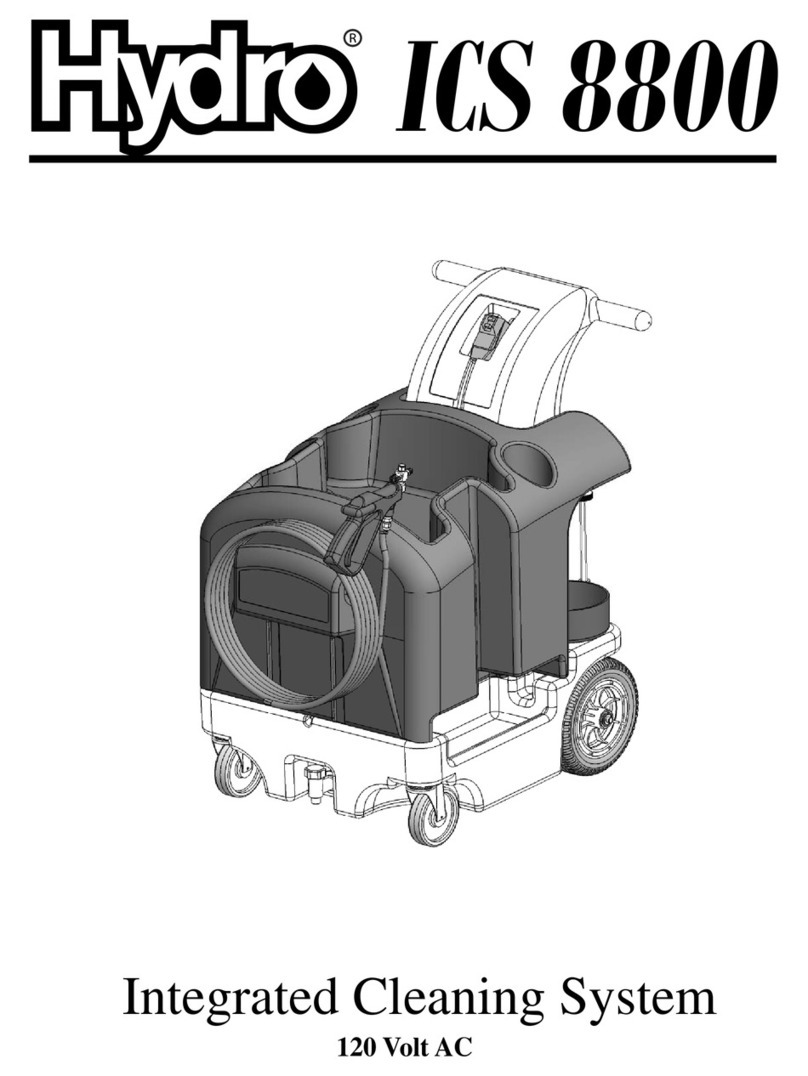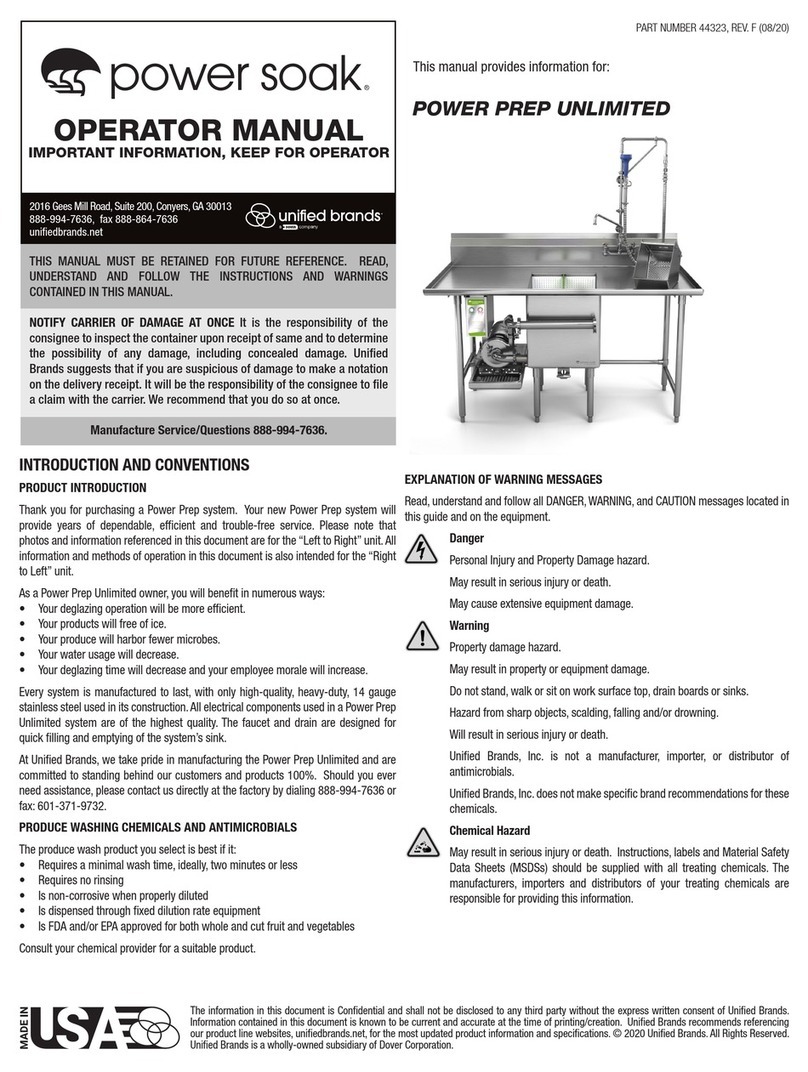
Daily:
1. When finished using the pump for the day, run the pump two minutes with the select valve and
nozzle in rinse position, to purge chemical from the unit. See Fig. G.
2. Turn the unit off with the switch. Relieve the pressure in the discharge hose by pulling the trig-
ger on the spray attachment after the switch has been turned off. A small amount of water will
discharge.
3. Check the unit for any damage or leakage.
4. If the unit is going to be stored where it can freeze, drain the water reservoir and run the pump
until there is no more water in the system. Allow the system to thaw before you start the pump.
5. Plug the unit into a 120 Volt outlet to recharge the battery. The indicator light on the charger
will be red while the battery is charging, and green when the battery is fully charged. Leave the
charger plugged in during long term storage to maintain the battery at peak capacity. Note: It
is not necessary to fully discharge the battery before recharging.
NOTE: Failure to follow this procedure after use will void the warranty on the pump.
1. The power switch is lighted when it is in the “ON” position.
2. The pump will run when the trigger on the spray attachment is pulled and stop when it is
released.
3. Run the unit approximately 10 seconds to flush prior chemical from hose.
Normal Operation
CAUTION: Continuous cycling of the pump (continuous, rapid on/off cycles) indicates a
problem with the unit. Have the unit serviced immediately.
CAUTION: Do not operate unit while the charger is plugged into an electrical outlet. If unit
does not operate unless plugged in, check that the battery terminals are connected (see
initial set up proceedure on page 4).
Out of water/chemical indication:
When the system runs out of either water or chemical, air will enter the water stream and it will
become “rough.” The pump may also continue to run when the trigger is released. Turn off
the power immediately, fill the water reservoir and/or replace the empty product container, and
repeat the priming operation.
Maintenance
5


























